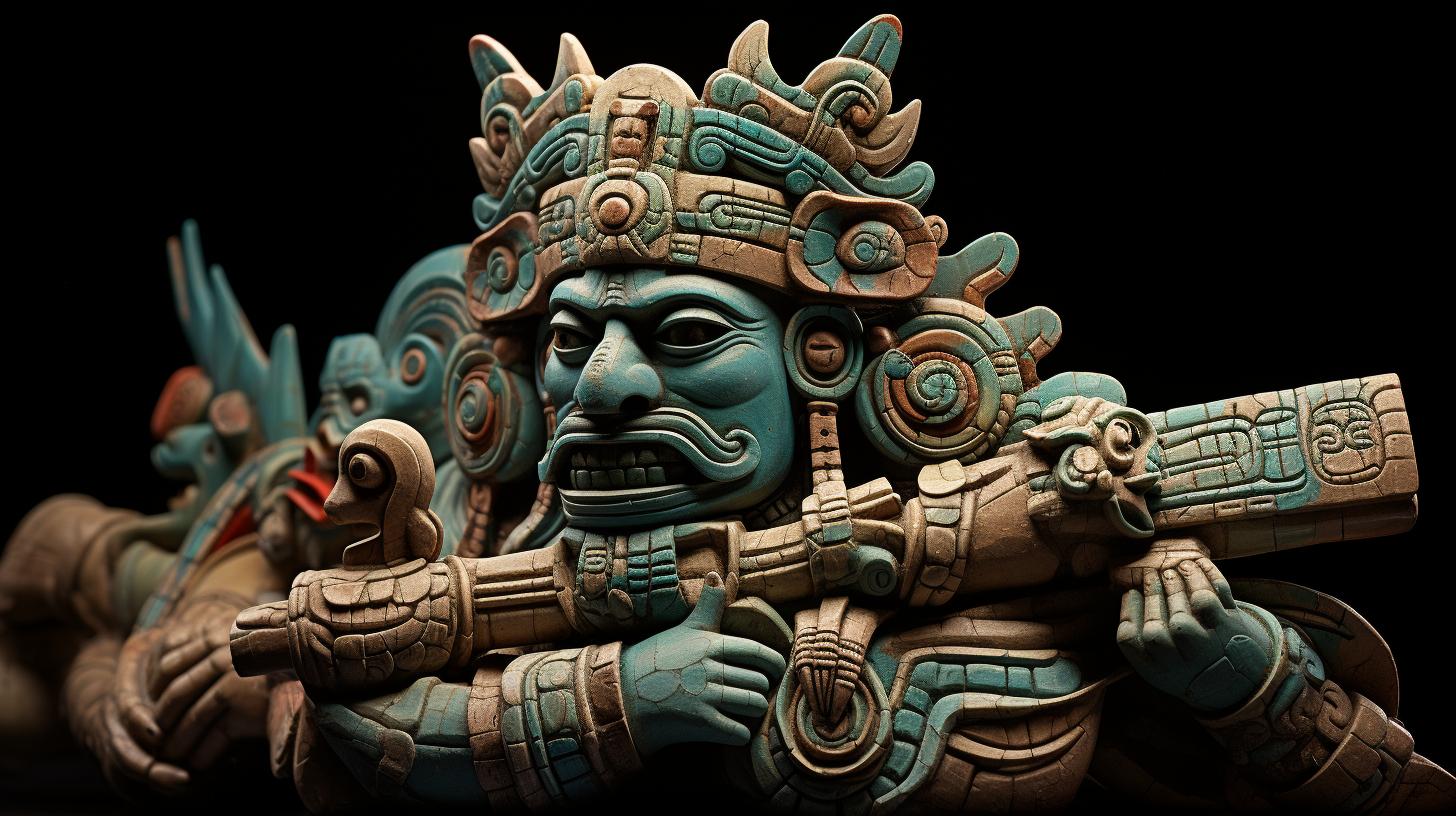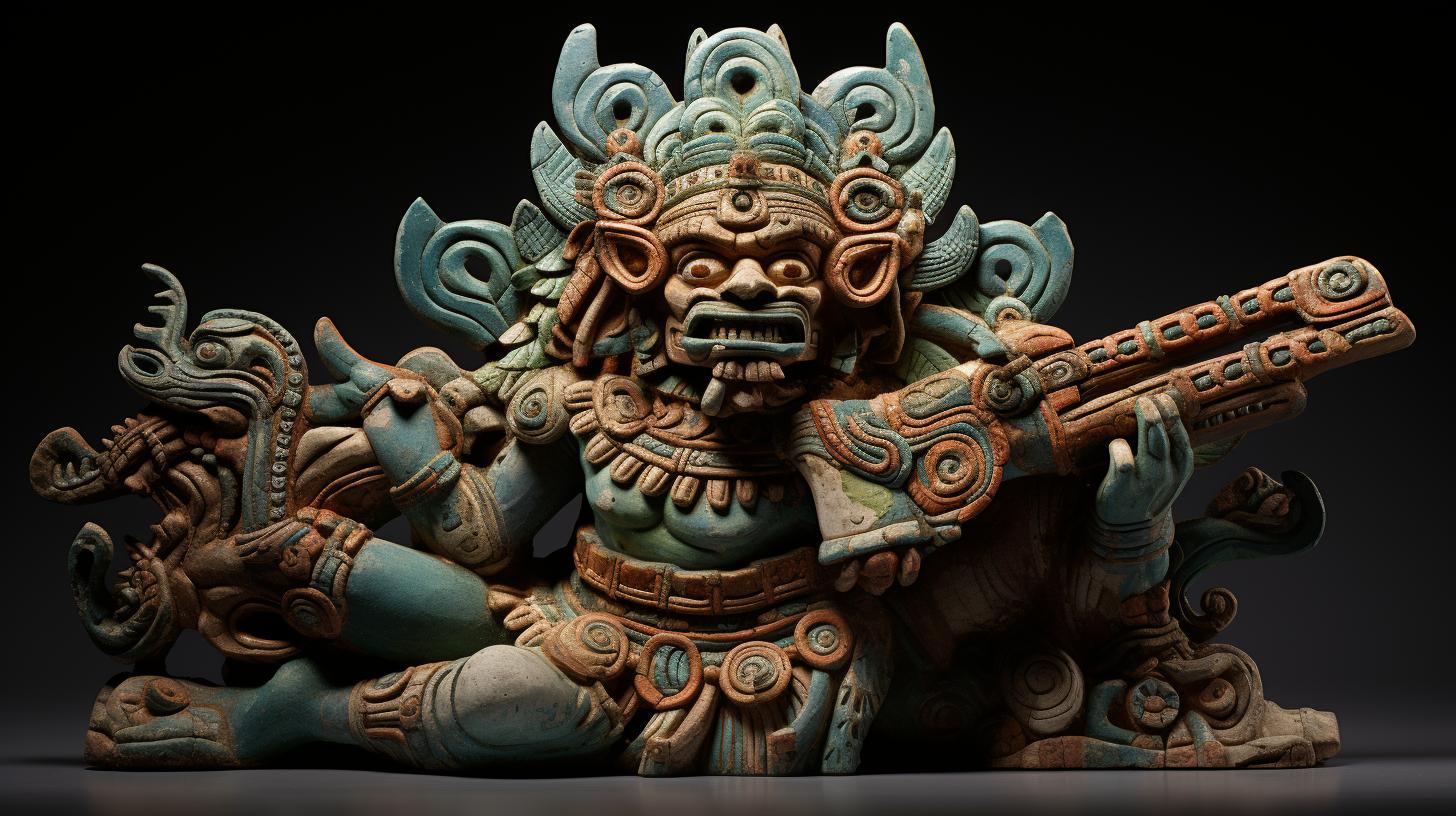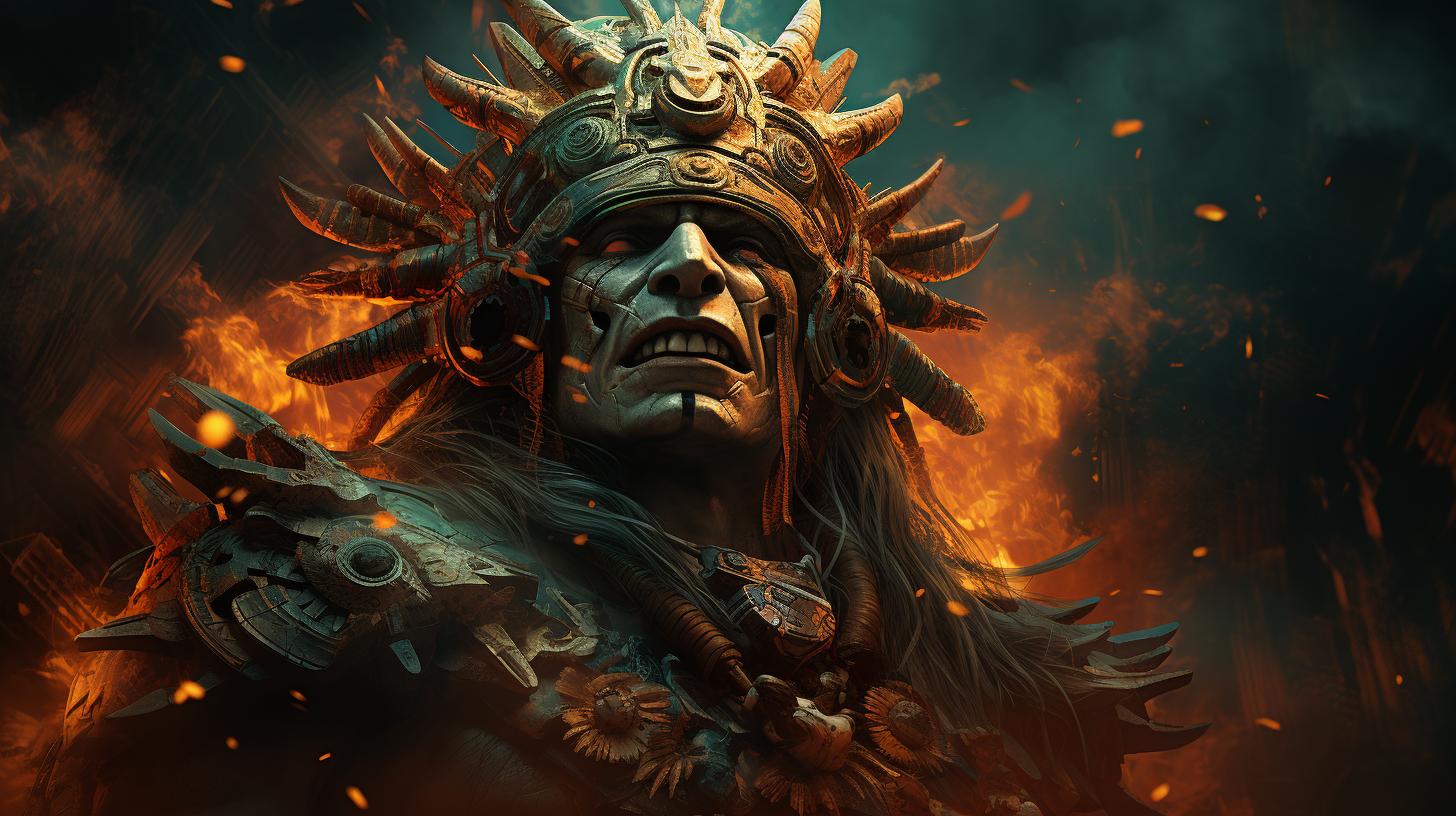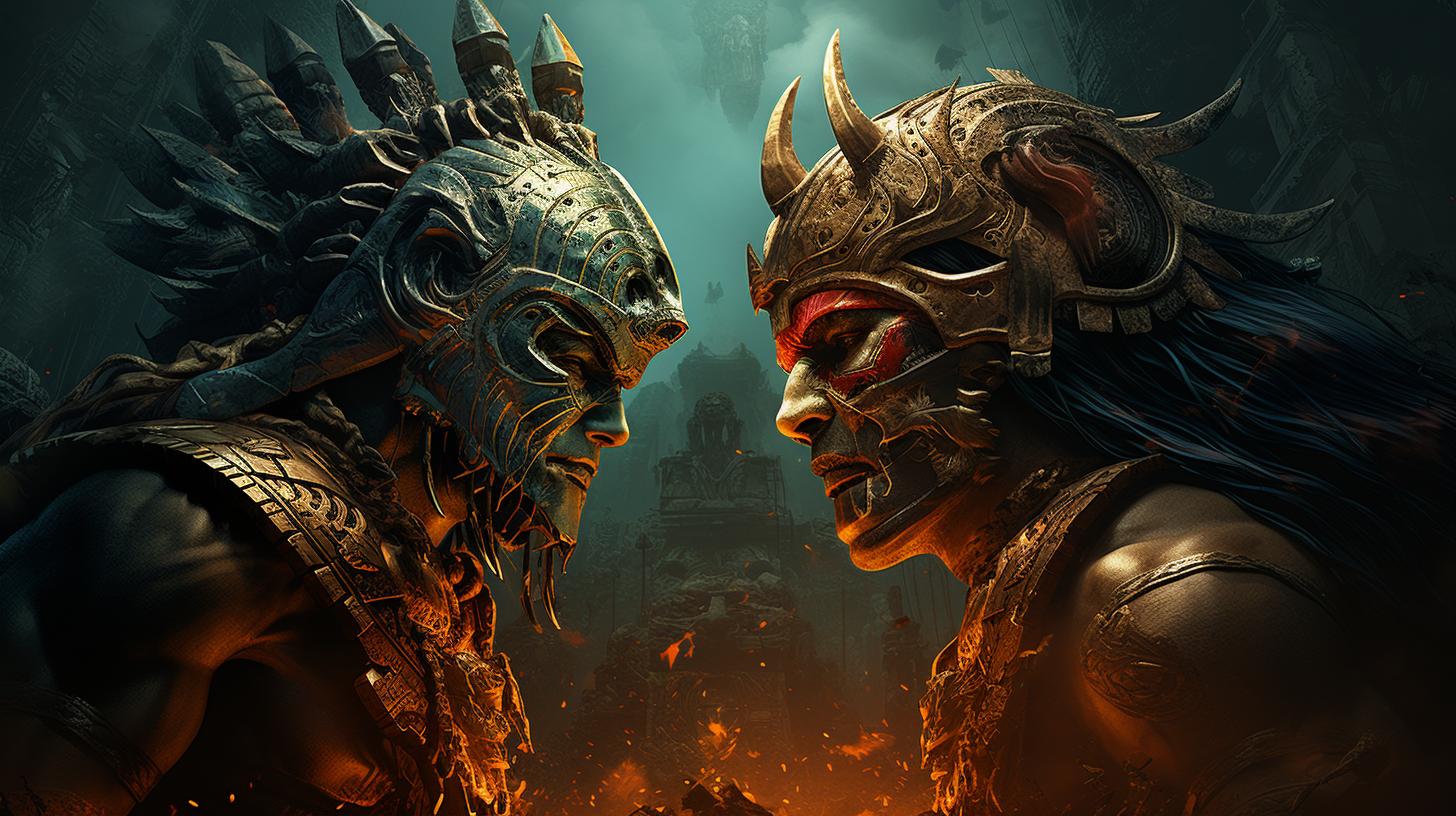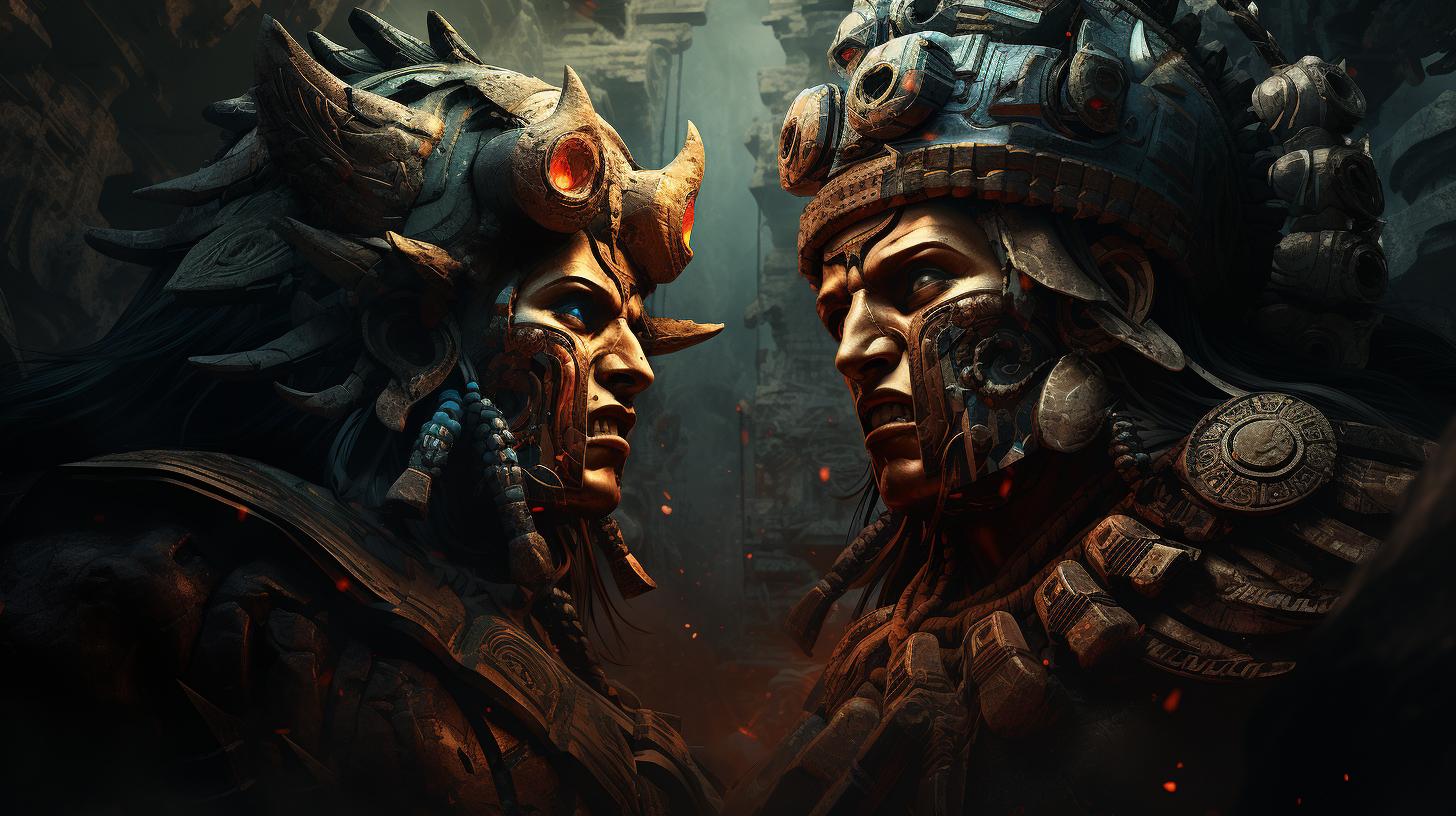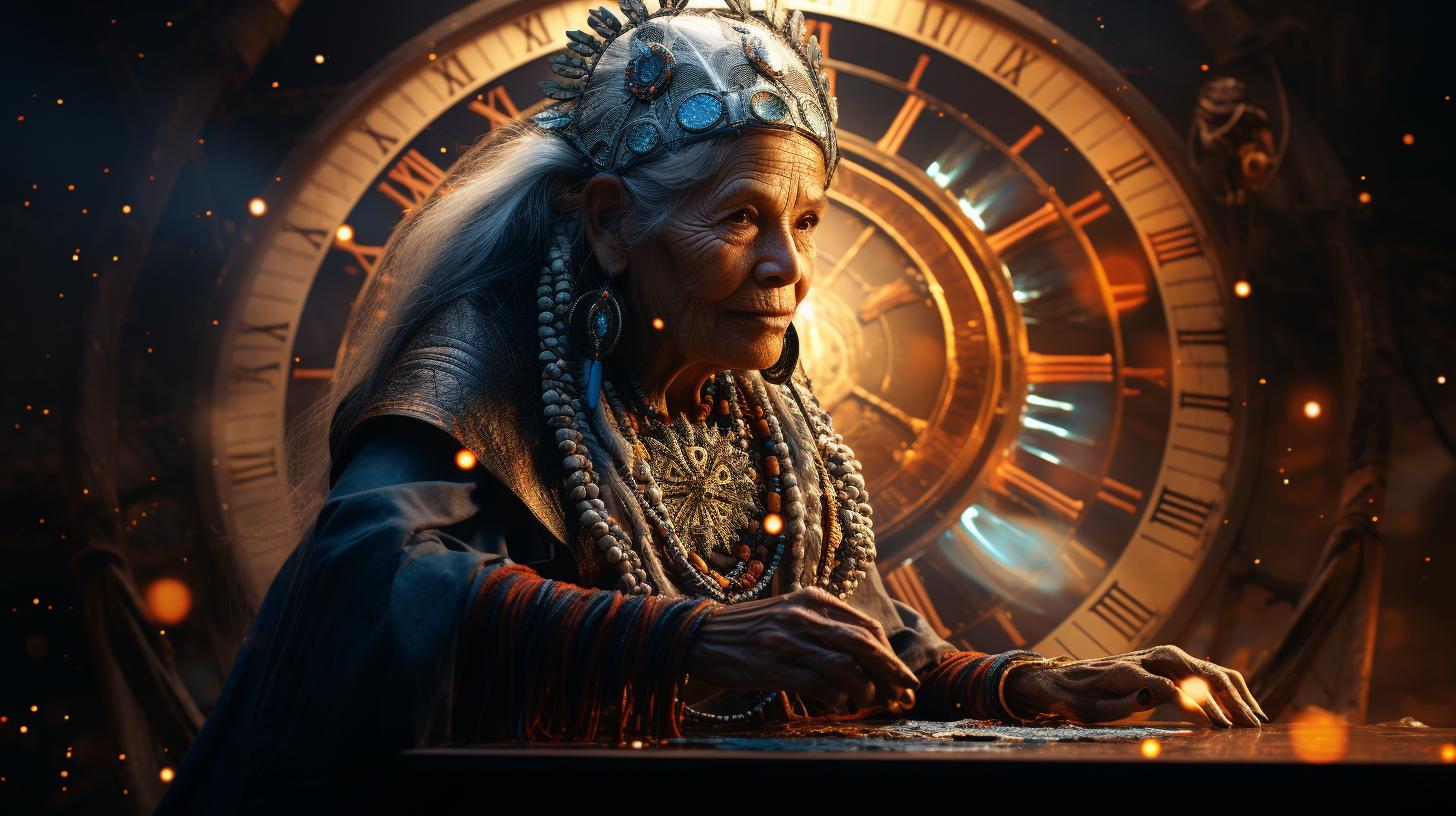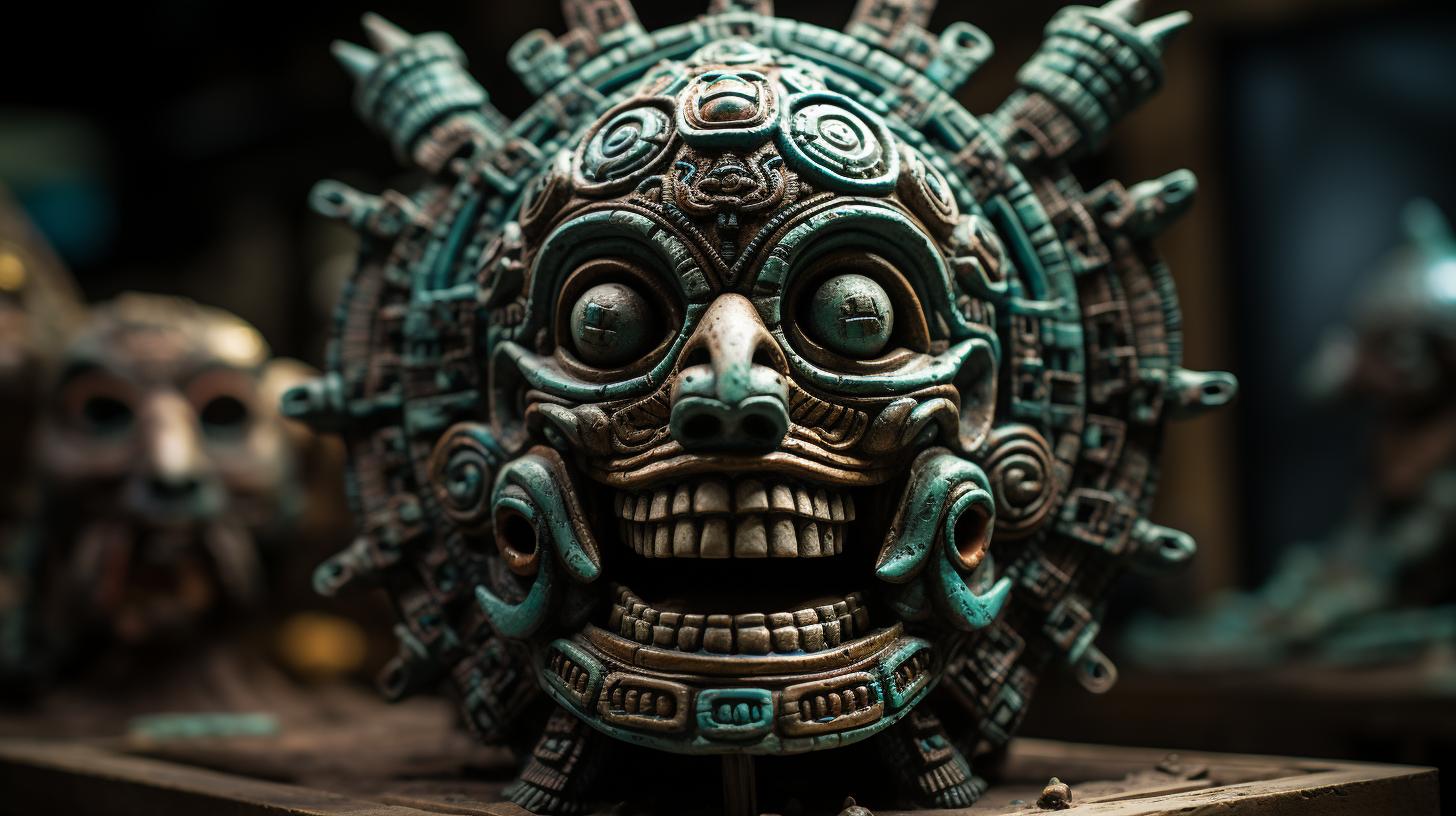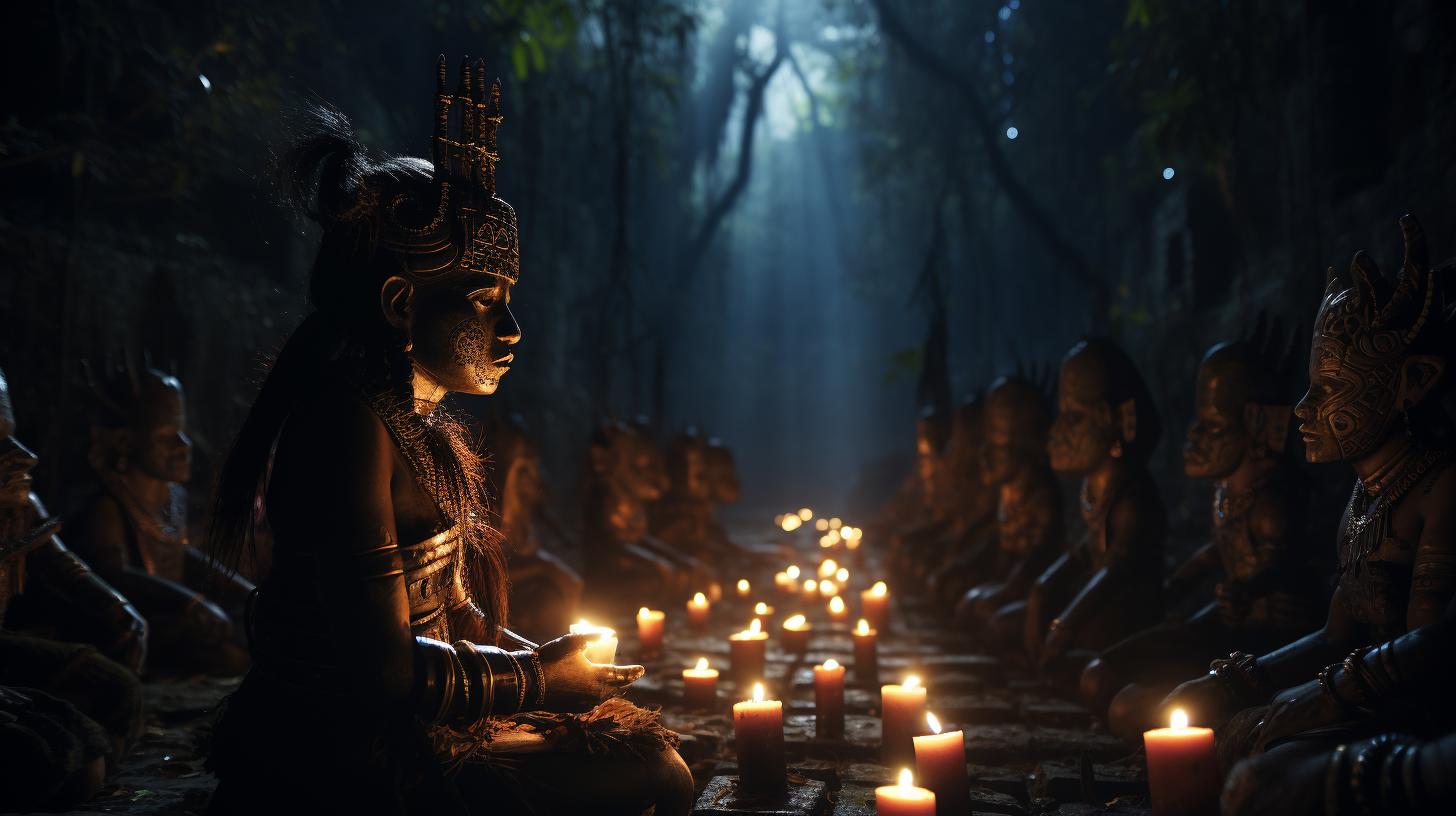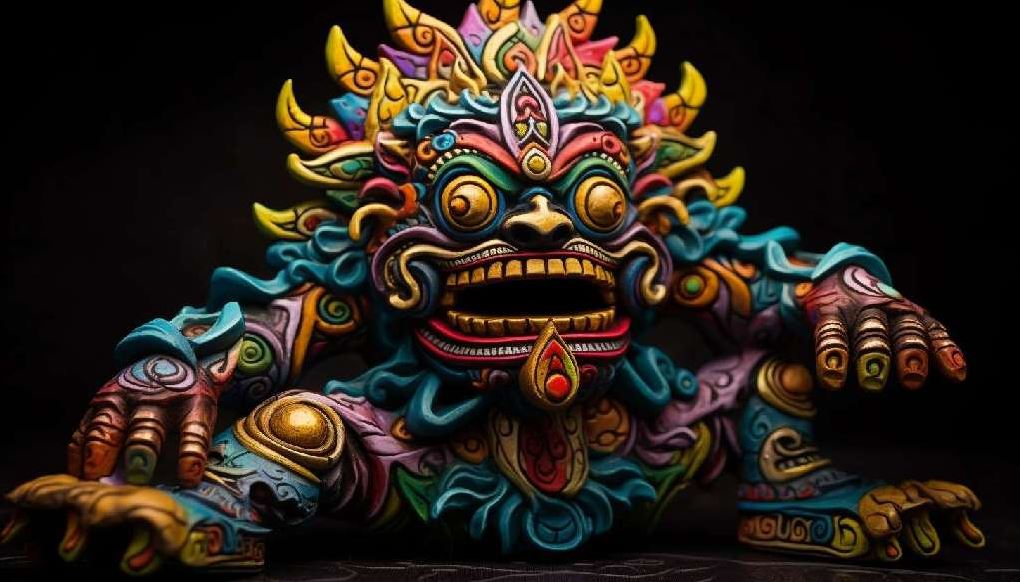Mayan God Chaac: Unveiling the Powerful Rain Deity in Mayan Culture
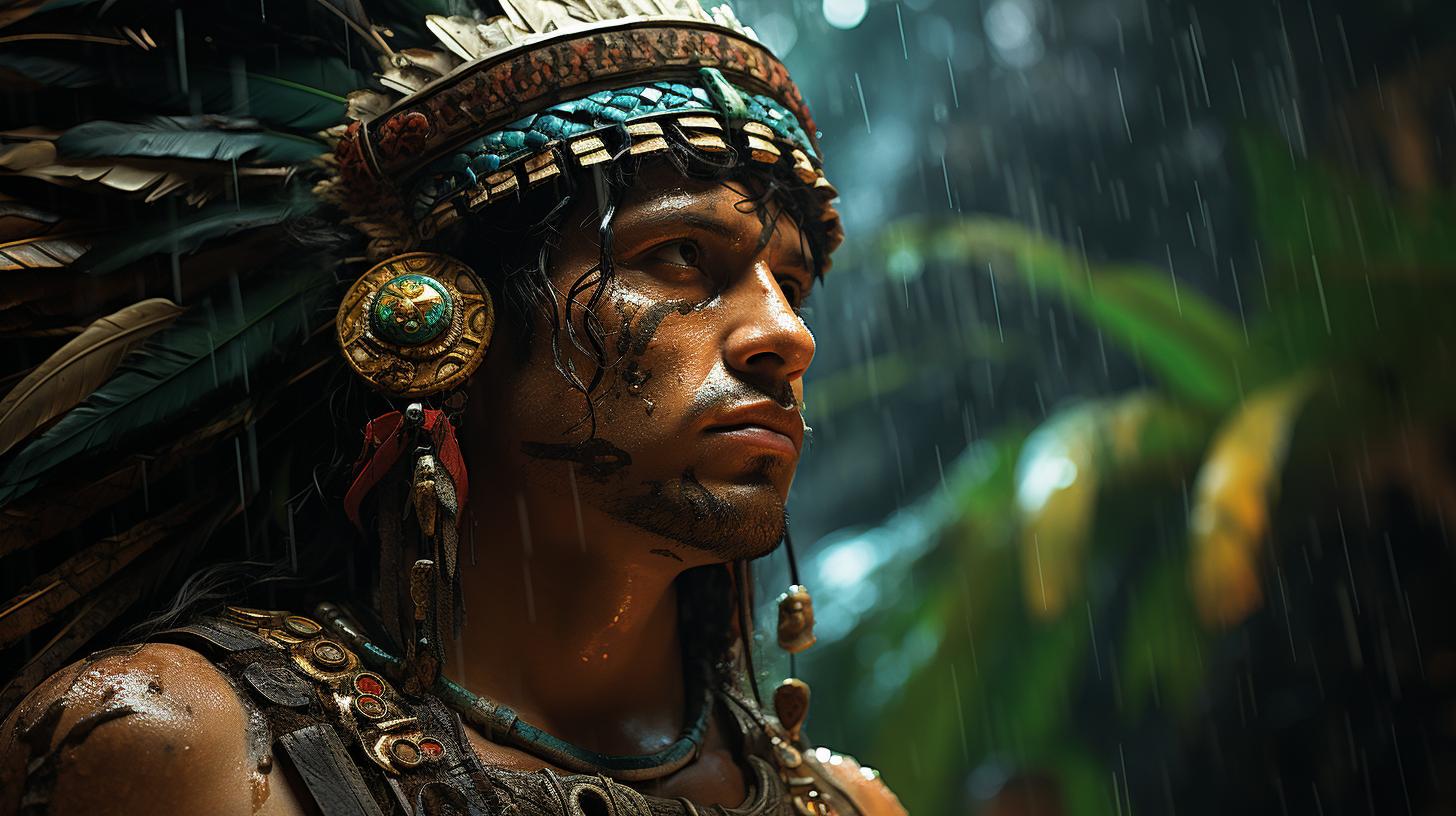
Chaac, the Mayan god of rain, held significant importance in ancient Mayan culture. Worshiped for his role in agriculture and water, Chaac was revered as a life-giving deity. Represented in various forms, he is depicted with jade axes and serpents, capable of generating rainfall.
Ceremonies and rituals dedicated to Chaac were carried out during periods of drought, even continuing in present-day Mayan communities. This article explores the symbolism, similarities to other rain deities, and the enduring influence of Chaac within Mayan society.
Who Is Chaac?
Chaac, the formidable Mayan rain deity, holds a significant place in ancient Mayan culture. Revered for centuries, Chaac’s power over rainfall and water sources earned him the status of a vital god for the Mayan people.
Depicted with jade axes and serpents, Chaac symbolizes the life-giving force of rain and its crucial role in sustaining agriculture.
His representation in Mayan artwork showcases a blend of human and animal features, emphasizing his divine connection with nature. Chaac’s influence extends beyond his role as a rain god, permeating multiple aspects of Mayan society, including rituals, ceremonies, and agricultural practices.
Understanding the enigmatic Chaac is essential to appreciating the rich spiritual and cultural traditions of the Mayan civilization. Through exploring Chaac’s significance, symbolism, and place within Mayan society, we can gain valuable insights into the complex belief systems that shaped the lives of the ancient Mayan people.
Importance of Chaac in Mayan Culture
In Mayan culture, Chaac held immense significance as the god of rain. The Mayans revered Chaac for his ability to bring the much-needed rainfall that sustained their crops and supported their agricultural practices.
The agricultural sector thrived, and the civilization flourished due to Chaac’s essential role in providing water for irrigation.
Chaac was not only associated with rain but also held sway over thunder, lightning, and storms. His presence was indispensable not just for the fertility of the land but also for the spiritual well-being of the Mayan people.
The replenishment of water resources through Chaac’s blessings was seen as a direct manifestation of divine intervention.
Throughout Mayan society, Chaac was highly respected, and his worship permeated all aspects of daily life. Rituals, ceremonies, and offerings were dedicated to appease and honor Chaac, ensuring a bountiful harvest and prosperity.
The belief in Chaac’s power to sway the elements provided solace and hope during times of drought, emphasizing his crucial role in sustaining the entire Mayan civilization.
Mayan culture recognized the interconnection between Chaac’s influence on rain and the survival of their community. The significance attached to Chaac’s presence and his ability to provide life-giving water underscored his central position within Mayan religious and cultural practices.
Chaac’s Role in Agriculture and Water
Chaac, the revered Mayan rain god, played a crucial role in the agricultural practices and water management of ancient Mayan civilization. Believed to control rainfall and ensure bountiful harvests, Chaac was highly venerated as the provider of life-sustaining water for crops and human existence.
The Mayans recognized the direct connection between Chaac’s influence and the success of their agricultural endeavors. The arrival of rain was seen as a blessing from Chaac, as it brought the necessary nourishment for their crops to thrive.
Farmers would perform rituals and sacrifices to appease Chaac and seek his favor, thus ensuring an abundance of water and fertility for their lands.
Chaac’s presence was particularly felt during the rainy season, known as the “Chaac season,” which was a critical period for planting and cultivation. The Mayans believed that Chaac resided in the cenotes, natural sinkholes found in the Yucatán Peninsula, and that offerings made in these sacred sites could influence his benevolence.
The intricate knowledge of Chaac’s role in controlling rainfall led the Mayans to develop advanced irrigation systems and water management techniques. Through the construction of canals, reservoirs, and terracing methods, they harnessed Chaac’s gift of rain, maximizing its distribution and utilization to support their agricultural endeavors.
Today, the reverence for Chaac’s role in agriculture and water remains embedded within contemporary Mayan communities. Ceremonies and rituals are still performed to honor Chaac, demonstrating the continued recognition of his importance in sustaining the cycles of life and fertility.
Depictions and Symbolism of Chaac
In Mayan culture, Chaac was depicted in various ways, symbolizing his association with rain and water. He often appeared with reptilian features, such as scales and serpent motifs, representing his control over rain clouds and water bodies.
The jade axes he typically held conveyed his power to generate rainfall, as jade was considered a sacred stone in Mayan culture.
Chaac’s imagery also incorporated attributes from both humans and animals, showcasing the belief in the interconnectedness of nature and divine forces. The four distinct Chaac deities associated with the cardinal directions were depicted with distinct colors, reflecting their roles in influencing rain patterns across the Mayan territories.
These representations of Chaac served as visual reminders of the god’s importance in agriculture and sustaining life. By honoring and worshiping Chaac, the Mayans sought to invoke his divine powers and ensure bountiful harvests and abundant water resources.
The symbolism embedded in Chaac’s depictions not only conveyed his role as a rain deity but also reflected the deep spiritual connection the Mayans had with their natural surroundings. Through art and imagery, Chaac’s significance and influence on Mayan culture were visualized and celebrated, emphasizing the vital role of water and rain in sustaining their way of life.
Rituals and Ceremonies Dedicated to Chaac
Throughout the Mayan civilization, rituals and ceremonies played a central role in worshiping Chaac, the powerful rain god. These religious practices were conducted with the aim of propitiating Chaac to bring forth abundant rainfall for agricultural prosperity.
One of the most prominent rituals dedicated to Chaac was the Rain Dance. Held during periods of drought, this ceremonial dance involved intricate choreography performed by skilled dancers adorned in vibrant costumes.
Through rhythmic movements and symbolic gestures, the dancers sought to invoke Chaac’s benevolence and compel him to send rain.
In addition to the Rain Dance, the Mayans conducted complex ceremonies that combined offerings, prayers, and sacrifices. Various items, such as maize, flowers, and jade artifacts, were presented as offerings to Chaac.
These ceremonies often took place in sacred locations, such as temples or natural cenotes.
Sacrifices held great significance in these rituals, with animals and occasionally even humans being offered to appease Chaac. The belief was that by giving something of value, they would gain favor with the deity and ensure his provision of rainfall.
The rituals and ceremonies dedicated to Chaac were essential in the Mayan agricultural calendar, as they directly influenced the success of crops and sustenance for the civilization. Even in contemporary Mayan communities today, these ancient traditions continue to be preserved and celebrated, reaffirming the enduring connection between the Mayan people and the powerful rain god, Chaac.
Similarities and Differences Between Chaac and Tlaloc
Chaac and Tlaloc, both revered as rain gods in ancient Mesoamerican cultures, share some similarities but also have distinct characteristics that set them apart.
- Divine Role: Both Chaac and Tlaloc hold significant roles in agriculture, as they are believed to have the power to bring rain. They are revered as providers of life and sustenance.
- Geographical Significance: Tlaloc was predominantly worshiped in Teotihuacan, while Chaac held utmost importance in the Yucatán region of Mexico.
- Physical Representations: Chaac is often depicted with reptilian features, including scales and attributes resembling fish.
On the other hand, Tlaloc is associated with caves, mountains, and springs, depicted with symbols such as butterflies, jaguars, and snakes.
- Symbolism: Tlaloc was closely associated with the mountain named after him , Tlaloc, considered his residence.
In contrast, Chaac wields jade axes and serpents, which he uses to call forth rain from the clouds.
- Regional Influence: While Chaac’s influence stretched across Mayan communities, Tlaloc played a prominent role in Aztec culture.
These cultural differences gave rise to unique rituals and ceremonies dedicated to each rain deity.
Though Chaac and Tlaloc share a common purpose of bringing rain and supporting agricultural endeavors, their representations, significance, and worship practices distinguish them within their respective cultures.
Mayan Sacrifices for Rain Propitiation
In order to appease the Mayan god Chaac and ensure rainfall for their crops, the ancient Mayans participated in elaborate rituals and made sacrifices. These ceremonies were dedicated to seeking Chaac’s favor and influencing the weather patterns.
The sacrifices for rain propitiation varied in nature. The Mayans offered numerous objects as a symbolic gesture, including food, flowers, and precious stones, to demonstrate their gratitude and desire for abundant rain.
Additionally, animal sacrifices played a significant role in the rituals. Creatures such as jaguars, birds, and even humans were sacrificed to honor Chaac and entreat him to unleash the life-giving rains.
- Food and floral offerings
- Precious stones
- Animal sacrifices
These sacrifices were believed to show the Mayans’ commitment and dedication to their deity, ultimately leading to the fulfillment of their agricultural needs.
The community’s reliance on these ceremonies displays the importance of Chaac in Mayan culture and their deep connection to the cycles of rain and fertility.
Legacy and Influence of Chaac in Contemporary Mayan Communities
The legacy of Chaac, the mighty Mayan god of rain, continues to have a profound influence on contemporary Mayan communities. Despite the passage of time and the convergence of modern influences, the reverence for Chaac and his importance in the agricultural practices of the Mayan people remain steadfast.
Traditional rituals and ceremonies dedicated to Chaac are still performed in present-day Mayan communities, especially during periods of drought. These rituals serve as a poignant reminder of the significant role Chaac played in ensuring the welfare and abundance of agricultural crops.
The legacy of Chaac can also be seen in the preservation of Mayan cultural identity. Through their continued reverence for Chaac, contemporary Mayan communities demonstrate their commitment to honoring their rich cultural heritage and ancestral traditions.
The influence of Chaac goes beyond spiritual and cultural realms, extending to ecological and environmental practices as well. Mayan communities, inspired by Chaac’s connection to water and his role in balancing ecosystems, have actively engaged in sustainable farming methods and conservation efforts.
Chaotic weather patterns and climate change have made the presence of Chaac even more significant in contemporary times. The rituals and beliefs surrounding Chaac serve as reminders of the delicate relationship between humans and the environment, urging us to care for and protect our natural resources.
As we move forward into the future, the legacy and influence of Chaac in contemporary Mayan communities will continue to shape cultural practices, environmental awareness, and the overall resilience of the Mayan people.
See also
- Mayan Civilization: Explore the rich history and cultural significance of the Mayan civilization, where Chaac played a prominent role.
- Precipitation in Mesoamerica: Discover the importance of rainfall for agricultural practices in the Mesoamerican region, highlighting the role of Chaac as the god of rain.
- Mesoamerican Deities: Delve into the fascinating world of Mesoamerican deities to compare Chaac with other gods, such as Tlaloc, who shared similar roles as rain gods.
- Mayan Agriculture: Learn about the agricultural practices of the ancient Mayans, which heavily relied on the benevolence of Chaac to ensure fruitful harvests.
- Rituals in Ancient Civilizations: Explore the diverse rituals and ceremonies conducted by ancient civilizations, including Mayan communities, to appease gods like Chaac and ensure rainfall for agricultural prosperity.
Expand your knowledge of Mayan culture, deities, and the vital role of Chaac by exploring these related topics.

